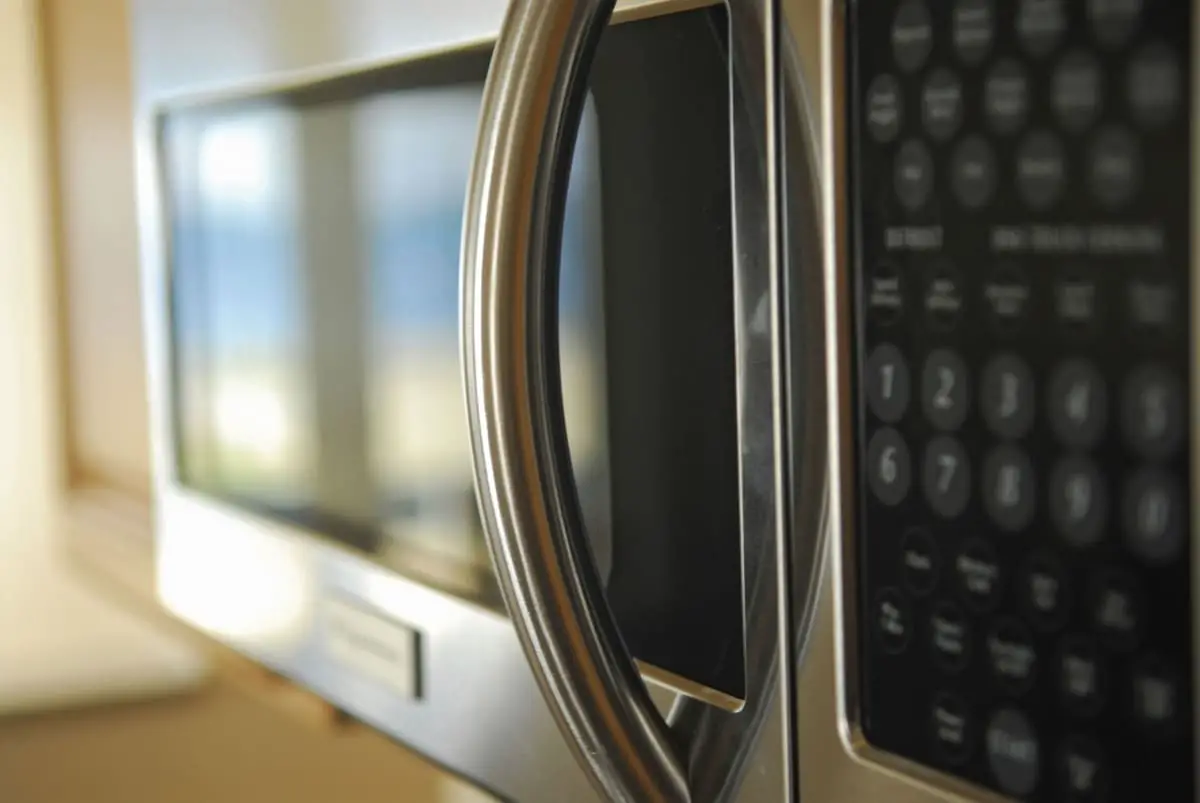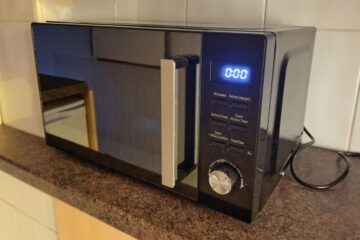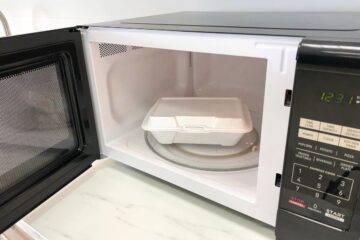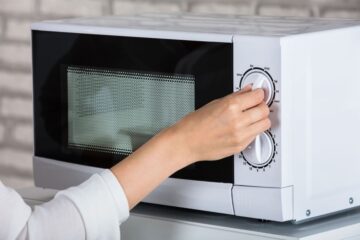As a busy person, you may have considered microwaving your food wrapped in cling wrap for convenience. However, there are concerns about the safety of using cling wrap in the microwave. In this article, we will explore the safety of cling wrap in the microwave, including its chemical composition, potential health risks, and how to use it safely.
What is Cling Wrap and How Does It Work?
Definition of Cling Wrap
Cling wrap is a thin, clear, plastic film used to wrap and cover food. It is made from low-density polyethylene (LDPE), a type of plastic that is flexible and transparent. Cling wrap sticks to itself and creates an airtight seal around food, keeping it fresh and preventing odors from escaping.
Materials Used in Making Cling Wrap
The main ingredient in cling wrap is LDPE, a type of plastic made from petroleum. Other additives are added to improve its performance, such as plasticizers, stabilizers, and colorants.
How Does Cling Wrap Work?
Cling wrap works by creating an airtight seal around food, preventing air and moisture from entering and escaping. It also helps to keep food fresh and prevent odors from escaping.
Understanding Microwaves and How They Work
Definition of Microwaves
Microwaves are a type of electromagnetic radiation that has a shorter wavelength than radio waves but longer than infrared radiation. They are used in microwave ovens to heat food quickly and efficiently.
How Do Microwaves Work?
Microwave ovens generate microwaves, which are absorbed by water, fats, and sugars in food. As these molecules absorb microwaves, they start to vibrate and generate heat, which cooks the food.
Types of Microwaves
There are two types of microwaves: countertop and built-in. Countertop microwaves are portable and can be placed on a countertop or table. Built-in microwaves are designed to be installed in a cabinet or wall.
What Makes Cling Wrap Unsafe for Microwaving?
Chemical Composition of Cling Wrap
Cling wrap is made from LDPE, a type of plastic that may contain harmful chemicals such as bisphenol A (BPA), phthalates, and dioxins. When exposed to heat, these chemicals may leach into food, potentially causing health risks.
How Microwaves Work with Cling Wrap?
When cling wrap is microwaved, it can melt or warp due to the heat. As a result, it may create small holes or gaps, allowing steam and chemicals to escape from the food. This can lead to contamination and reduce the effectiveness of the wrap.
The Risk of Plastic Chemicals Leaching into Food
Plastic chemicals such as BPA and phthalates are endocrine disruptors that can mimic hormones in the body and interfere with normal hormonal function. Exposure to these chemicals has been linked to various health problems, including reproductive disorders, cancer, and developmental issues.
How to Use Cling Wrap Safely in the Microwave?
There are several tips for safely using cling wrap in the microwave. Here are some key things to keep in mind:
- Choose cling wrap that is labeled as microwave safe. Look for products that explicitly state that they are safe for microwave use.
- Avoid wrapping fatty foods in cling wrap. Instead, use a microwave-safe dish with a lid or a paper towel to cover the food.
- Make sure the cling wrap is not touching the food. Leave a small gap between the cling wrap and the food to prevent chemicals from leaching into the food.
- Use short cooking times. It is recommended to microwave food in short intervals, checking and stirring the food regularly.
Alternatives to Cling Wrap for Microwaving Food
If you are concerned about the safety of cling wrap in the microwave, there are several alternatives that you can use instead. Here are some options:
- Microwave-safe glass containers with lids. These are a great alternative to cling wrap for microwaving food, as they are durable, reusable, and do not release harmful chemicals.
- Microwave-safe plates with lids. Similar to glass containers, plates with lids are a safe and convenient option for microwaving food.
- Paper towels. If you need to cover food while microwaving, a paper towel can be an effective alternative to cling wrap.
- Reusable silicone food covers. These covers are a sustainable alternative to cling wrap, as they can be washed and reused multiple times.
Potential Health Risks of Using Cling Wrap in the Microwave
While the use of cling wrap in the microwave is generally safe when used correctly, there are potential health risks associated with its use. The chemicals in cling wrap can leach into food when it is heated, which can have negative health effects.
Some of the potential health risks associated with using cling wrap in the microwave include:
- Increased risk of cancer. Chemicals in cling wrap, such as bisphenol-A (BPA) and phthalates, have been linked to an increased risk of cancer.
- Hormonal disruption. The chemicals in cling wrap can disrupt the body’s hormonal balance, which can lead to a range of health problems.
- Developmental problems. Exposure to chemicals in cling wrap during pregnancy or infancy can lead to developmental problems in children.
To reduce your risk of exposure to these chemicals , it’s important to follow safe practices when using cling wrap in the microwave. Here are some tips:
- Use microwave-safe cling wrap: Look for cling wrap that is labeled “microwave-safe” or “heat-resistant.” These types of cling wrap have been tested and approved for use in the microwave.
- Don’t let the cling wrap touch the food: Make sure there is a small gap between the cling wrap and the food to prevent any chemicals from leaching into the food.
- Avoid wrapping fatty or acidic foods: Fatty or acidic foods can cause the chemicals in cling wrap to break down and leach into the food.
- Use a microwave-safe dish: Consider using a microwave-safe dish with a lid instead of cling wrap. This can help prevent any potential chemical exposure.
- Use alternative food storage options: Instead of cling wrap, consider using glass containers or beeswax wraps to store your food.
Alternatives to Cling Wrap for Food Storage and Microwave Use
As we have seen, there are potential health risks associated with using cling wrap in the microwave. Fortunately, there are many alternatives available that are safer and more environmentally friendly.
Sustainable food storage alternatives to Cling Wrap include reusable silicone food storage bags, beeswax wraps, and glass containers with lids. These options not only reduce plastic waste, but they are also more durable and can be reused many times.
Non-plastic alternatives to Cling Wrap include paper-based products such as parchment paper and butcher paper, as well as aluminum foil. While these options may not be as eco-friendly as the sustainable food storage alternatives, they are still safer for use in the microwave.
What are the Food Safety Guidelines for Microwave Use?
It’s important to follow safety guidelines when using the microwave to avoid potential hazards. These include:
- Using microwave-safe containers
- Stirring and rotating food to ensure even heating
- Letting food stand for a few minutes after heating to allow for even cooking
- Testing the temperature of the food before eating
The FDA also provides guidelines for microwave use, which include instructions for cooking, defrosting, and reheating various types of foods.
How to Choose Safe Cling Wrap for Microwave Use?
If you choose to use cling wrap in the microwave, there are some tips to follow to ensure your safety. Look for cling wraps that are labeled as microwave-safe and avoid using cling wrap that is torn or damaged. Some recommended brands for safe cling wrap include Saran Wrap, Glad Press’n Seal, and Stretch-tite.
Cling Wrap vs Aluminum Foil vs Wax Paper: Which is Safe for Microwaving?
While all three of these materials can be used in the microwave, cling wrap is generally considered the safest option. This is because aluminum foil can cause sparks, and wax paper can melt and potentially transfer chemicals to the food.
What are the Best Ways to Store Food in the Fridge and Freezer?
When it comes to storing food in the fridge and freezer, it’s important to choose the right containers. Glass and stainless steel containers are great options for the fridge, while plastic containers with tight-fitting lids work well in the freezer. It’s also important to label your containers with the date to ensure that you don’t eat spoiled food.
How to Dispose of Cling Wrap Safely?
When it’s time to dispose of cling wrap, it’s important to do so in an environmentally friendly way. Some eco-friendly options include recycling cling wrap that is labeled as recyclable, reusing it for non-food purposes, or composting it if it is made from biodegradable materials.
How to Reduce Plastic Waste in the Kitchen?
Reducing plastic waste in the kitchen is not only good for the environment, but it’s also good for your health. Some tips for reducing plastic waste include using reusable containers, buying in bulk to reduce packaging waste, and choosing products made from sustainable materials.
Conclusion
While cling wrap is a convenient way to store and preserve food, it’s important to be aware of the potential health risks associated with using it in the microwave. By following food safety guidelines, choosing safe cling wrap, and exploring alternative options, you can reduce your exposure to harmful chemicals and contribute to a healthier planet.



